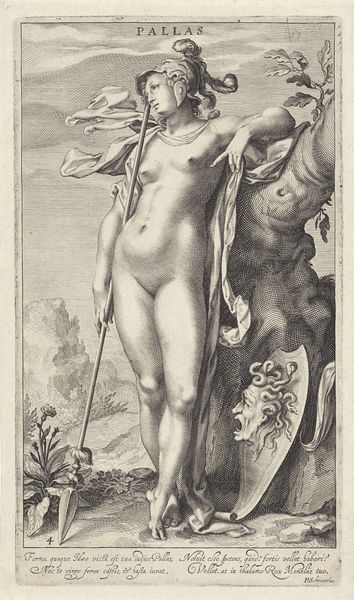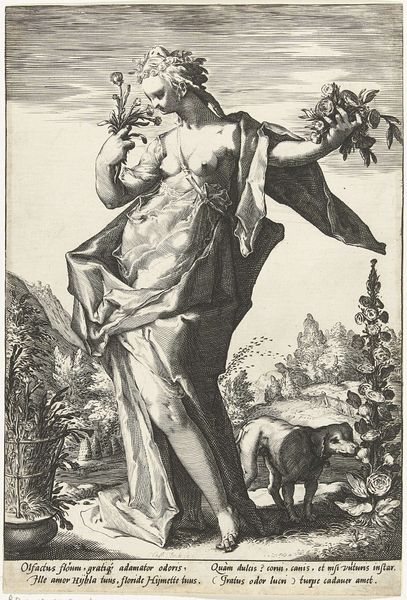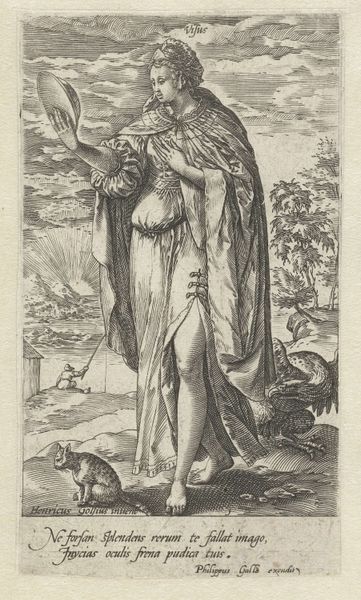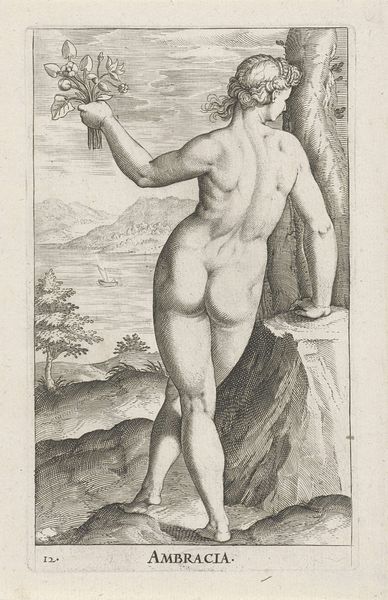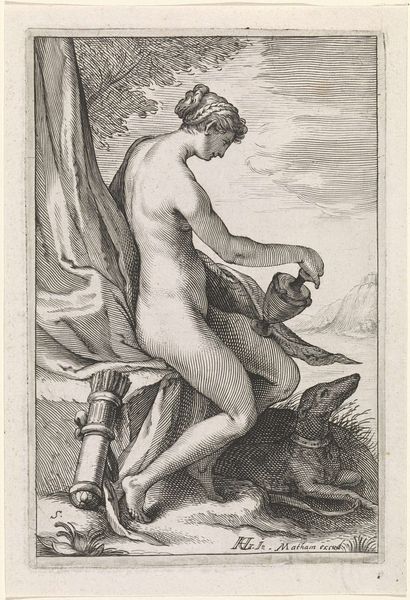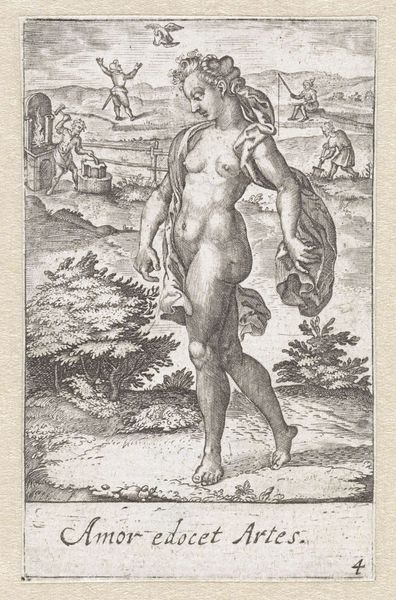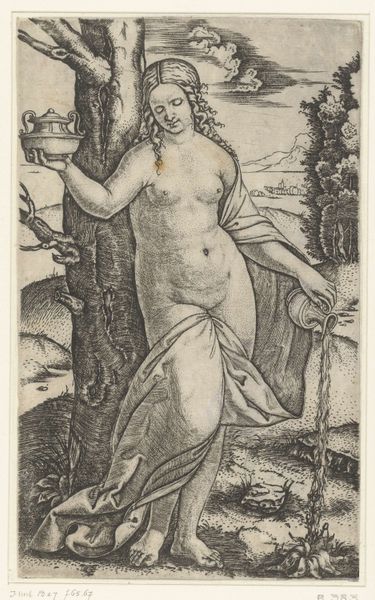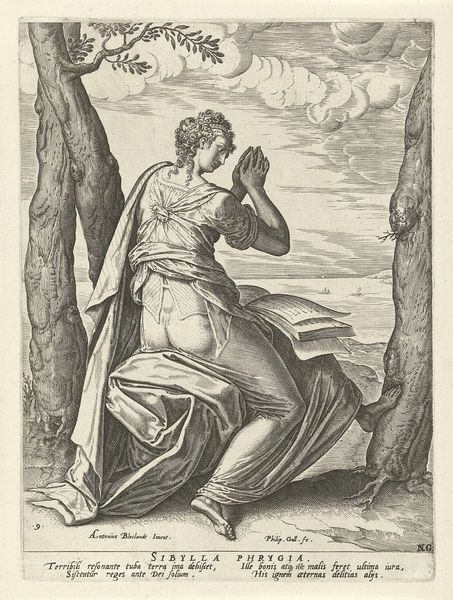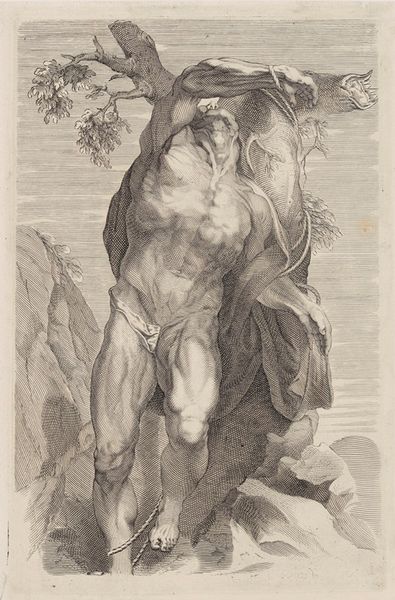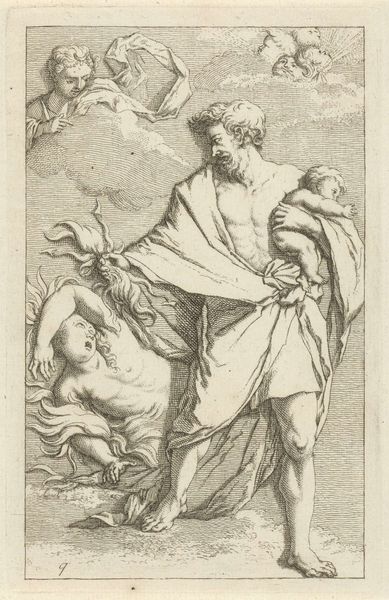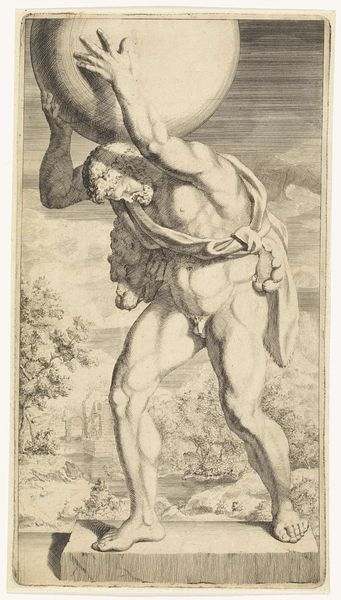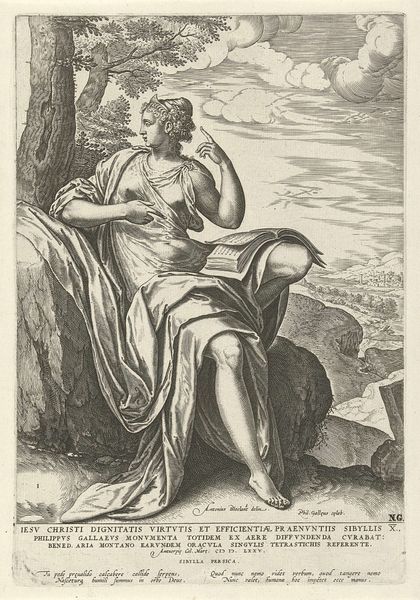
engraving
#
allegory
#
baroque
#
greek-and-roman-art
#
nude
#
engraving
Dimensions: height 248 mm, width 141 mm
Copyright: Rijks Museum: Open Domain
Curator: This is "Juno met Pauw" by Willem van Swanenburg, created sometime between 1670 and 1726. It's an engraving and part of the Rijksmuseum collection. Editor: Thanks! I’m struck by the goddess's demure pose, almost hiding herself, despite being nude. And of course, the peacock. How do you interpret this work, particularly considering its historical context? Curator: It's crucial to remember the period. Images of powerful, mythological women served distinct societal functions. The Baroque period saw art employed by institutions—royalty and the Church especially—to solidify power structures. Juno, as Queen of the Gods, embodies legitimacy. Note the engraving, it was a readily accessible and reproducible medium that ensured broad distribution of imagery, shaping public perceptions. Consider also, to whom was this image designed to appeal? Editor: That’s interesting. I hadn't thought about the deliberate act of distributing a nude figure for ideological reasons. Was it also playing into ideas around feminine ideals? Curator: Certainly. Representations of women were inherently political. What might the specific pose and gaze signify in this context, do you think? Does it celebrate female strength, or does it subtly reinforce more passive expectations? What about the Latin text printed beneath the image? Editor: It appears the text connects Juno with the judgment of Paris, something about preferring power to beauty. Perhaps the figure's reluctance reflects that choice. Thanks, this is more complex than it first appeared! Curator: Exactly! Art isn't made in a vacuum. Investigating the sociopolitical undercurrents truly unlocks the art's role in its time.
Comments
No comments
Be the first to comment and join the conversation on the ultimate creative platform.

